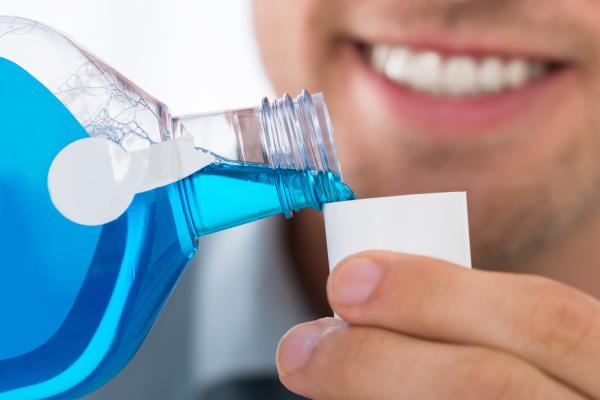In October, I wrote about the release of the Centers for Disease Control and Prevention’s (CDC) annual Sexually Transmitted Disease Surveillance Report which reflected record highs in the three most commonly reported conditions in the United States in 2015: primary and secondary syphilis, gonorrhea and chlamydia. (1)
Concerns over increasing antibiotic resistance risks accompanying the rapid rate of rise of gonorrheal infection prompted researchers in Australia to investigate alternate means of prevention in addition to conventional measures (e.g. condoms).
Dr. Chow and colleagues decided to explore once and for all whether the claim - made in the pre antibiotic era of 1879 - by the manufacturer of Listerine mouthwash that it could cure gonorrhea was fact or fiction. There were no scientific studies to support this, so this team endeavored to discern its veracity in their latest work. The findings —funded by the Australian National Health and Medical Research Council — are published online in the December 20 edition of Sexually Transmitted Infections.
An Australian research team from the Melbourne Sexual Health Centre (MSHC) set out to combat, in particular, the climbing annual gonorrheal diagnoses in men who have sex with men (MSM). They report these infections have doubled there from 6892 to 11,508 in the last five years with roughly 70% of cases in MSM. They further write in their recent publication that this is so in many countries attributing it, in part, to advances in HIV prevention like preexposure prophylaxis and consequent declining condom adherence.
They performed a dual study with the goal of determining if Listerine mouthwash could inhibit Neisseria gonorrhoeae in the lab and in a randomized, controlled trial (RCT).
In the in vitro lab testing study, Listerine alcohol-containing mouthwashes (Cool Mint and Total Care) were applied by varying dilution strengths to serial cultures of pharyngeal gonorrheal isolates. A control was run in parallel with saline solution. This resulted in significant reduction of total N. gonorrhoeae counts for the Listerine dilutions up to 1:4 for 1 minute and no benefit by the saline group. These experiments were repeated three times with the results reflecting the mean (aka the average).
The GONE (GONorrhoea Eradication) study was a RCT conducted at the MSHC between 22 May 2015 and 2 February 2016. This major publicly funded sexual health service in Victoria, Australia provides 40,000 yearly free consultations with an estimated 37% being MSM. As part of routine screening, those who were evaluated there were swabbed for pharyngeal gonorrhea. MSM who tested positive and returned for treatment were eligible to participate— those with symptomatic urethral gonorrhea or those in contact with gonorrhea were treated but excluded from the trial.
Participants were instructed to rinse the oral cavity and gargle back to the oropharynx for 1 minute with their designated solution albeit Listerine Cool Mint or saline. Before and after swabs were obtained. Questionnaires were completed that included information on their mouth wash use, alcohol and sexual histories. After this, their rinse and gargle and specimen collections, they were treated with the standard antibiotic regimen.
196 MSM who tested positive on their initial screening visit to MSHC were recruited for the study. On return, only 58 were again positive. Of those, 33 were assigned the Listerine rinse and gargle, 25 the saline. The Listerine group were much less likely to be culture positive (52%) than the men in the saline group (84%).
Yes, a very small sample size was analyzed so the power of the study is restricted. This may imply a level of self-limited colonization as well. It appears this is a starter trial to garner some preliminary data to go on to perform larger prevention studies involving daily mouthwash use or comparative treatment studies. Dr. Chow et al recognize the short follow-up time as an issue in the RCT arm as they cannot exclude a short-term benefit. It was also not blinded to the team or patients. However, their lab arm revealed a longer term impact with significant curbing of N. gonorrhoeae growth. Next steps are already under way.
The authors convey, “Whether a pharyngeal intervention can reduce the overall rates of gonorrhea when it also infects the anus and urethra, depends on the contribution that pharyngeal gonorrhea makes to the overall incidence in MSM. A number of studies have implicated pharyngeal gonorrhea as an important source of both urethral and anal infection.” These tend to have symptoms that warrant prompt treatment whereas pharyngeal gonorrhea is asymptomatic.
Good oral hygiene certainly lends itself to improved overall health and well-being. (2) Daily long-term mouthwash rinse and gargling is definitely readily available and less expensive than other modes of prevention. The authors further demonstrate the high compliance rate of mouthwash in existing literature. Whether it can be a profound disruptor in the spread of gonorrhea requires a lot more investigation and is simply too soon to tell.
That said, daily mouthwash and optimal oral care will likely make you and those around you happier, in general.
Notes:
(1) Gonorrhea and Chlamydia and Syphilis, Oh My! underscored that anyone can get infected and stratified those most at risk according to the CDC's latest data.
(2) Refer to my article Banging out Penile Prowess for further discussion on the possible link between periodontal disease and erectile dysfunction.
Source:




